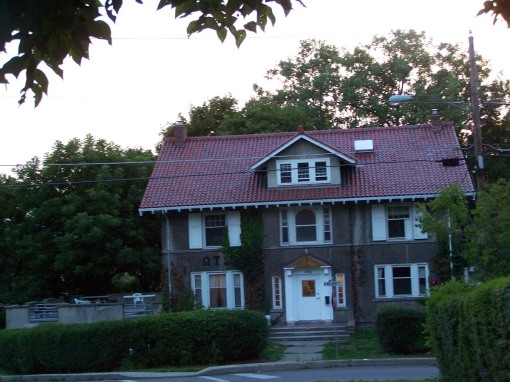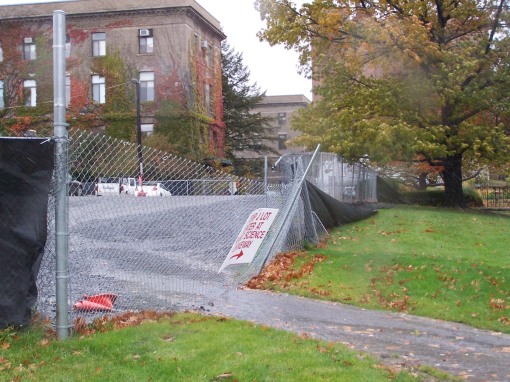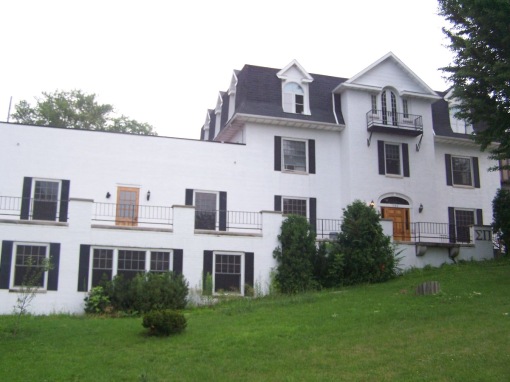So, Cornell is an institution with a long and extensive history, and as with any institution of its size there’s been to be a few…unpleasant crimes associated with the school or its alumni.
Oh, the prestigious alumni. For example, Michael Ross ’81. By any regard, Michael Ross was the typical Cornellian; actively involved on campus and reasonably intelligent. However, he also had an unpleasant side [1].
Michael Ross had serious mental issues. Rape fantasies. So intense that he started acting on them. His first rape and homicide (via strangulation) was that of a Cornell student, 25 year old Dzung Ngoc Tu, on May 12, 1981. She was an agricultural economics (AEM) graduate student, who was apparently selected at random. It took a week to located her body at the bottom of Fall Creek Gorge, and while suicide was intially suspected, the Tompkins DA began to assert a case of foul play had occurred. However, there were no leads, and Ross did not admit to her slaying until he was arrested on seperate murder charges in 1984 (apparently he confessed during questioning by a police detective). According to news sources, Ross was never formally faced charges stemming from her death.
Michael Ross was responsible for the rape and murder of seven other young women in the 1980s. He was executed in 2005, New England’s first execution in 45 years.
Going into another case, there’s the double murder of two Cornell freshmen back in December 1983 [3]. Okay, I’m a horrible person; I have told people this story just for the sake of scaring the crap out of the people who live in Lowrise 7, where it occurred.
What happened was that the crazy ex-boyfriend of one of the victims decided to come to Ithaca and “reason” with her. By that, I mean taking her, her roommate, and five others hostage. After a short time, the girl managed to convince her ex to let the others go, but he kept her and her roommate. He then shot them both and fled. The girl, Young H. Suh ’87, died immediately. Her roommate, Erin C. Nieswand ’87, died of her injuries shortly after bring airlifted to a hospital in Syracuse. As students notified police, the 26-year old killer attempted to flee the area, but was forced off the road at Rout 366, where he then shot himself in the head. He survived, and was sentenced to life in prison in October 1984 [4].
This last one for today goes off on a slightly different tangent. Some of you might be aware of the can of worms that was the CIA’s involvement with mind-altering drugs (like LSD) to see if they could be useful for government business. Well, that didn’t work too well, nor was it much appreciated when the American people found out from declassified documents in 1975 [6].
I order to set up funding for their projects, the CIA worked with various organizations to establish feeder programs that would make the research look legit. One of the primary distributors were two Cornell professors, Harold Wolff and Lawrence Hinkle. The initial programs set up for the CIA was in the 1950s and called “The Society for the Investigation of Human Ecology”. In 1961, it was reorganized as the “Human Ecology Fund” and operated primarily out of the Medical School. This ended by the late 1960s.
For the record, the Human Ecology school adapted the name “Human Ecology” in 1969 (during the time of the program’s operation, it was still the school of Home Economics, so there are no connections worth making between the two).
So we’ll wrap that up for today. For kicks, I’ll attach this lovely article attacking Cornell for its Qatari medical school (Qatar supports Hamas). It’s a little too-partisan for my tastes, but it just proves the point that not everyone from CU and not everything CU does is (or should be) considered “good”.
http://www.renewamerica.us/columns/jweinstein/060421
Enjoy!
P.S. I suppose in keeping with the theme of this entry, I’ll update it to include the June 2009 murder of a Cornell researcher by her husband, a doctoral student in computer science [6]. It would appear he slit her throat and left her to die on a walking trail, and then set their apartment on fire, became involved in a high speed police chase and tried to slit his own throat to avoid arrest (which failed). Congrats to Blazej Kot, whose horrific homicidal tendencies make him destined to join the rest of the historical skeletons in Cornell’s closet.
[1]http://crime.about.com/od/deathrow/p/michael_ross.htm
[2]http://cornellalumnimagazine.com/Archive/2005marapr/features/Feature2.html
[3]http://cornellsun.com/node/27009
[4]http://query.nytimes.com/gst/fullpage.html?res=9903E5D6123BF936A35753C1A962948260
[5]http://www.thejabberwock.org/wiki/index.php?title=MK-ULTRA_and_Academia_-_Part_3
















